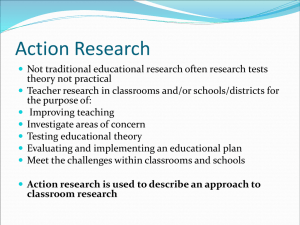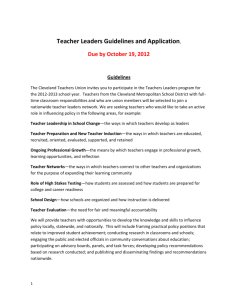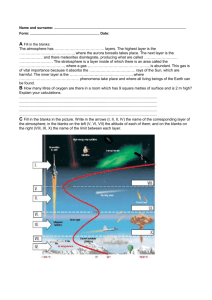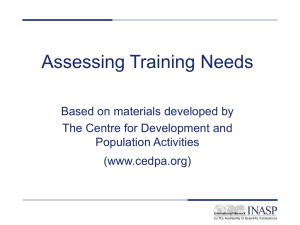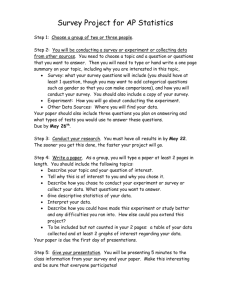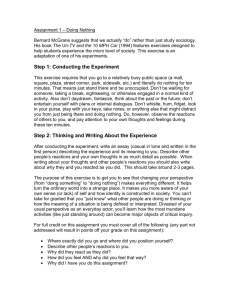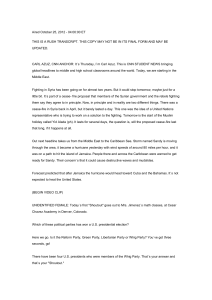Chapter 8
advertisement
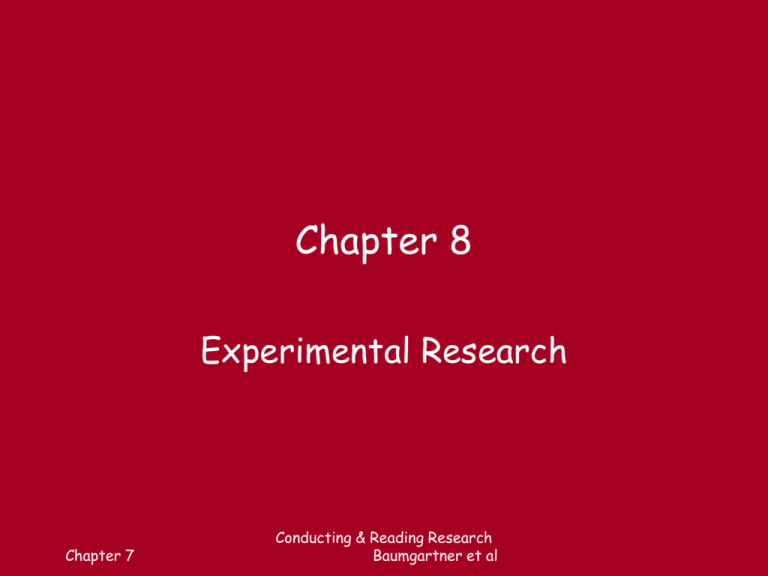
Chapter 8 Experimental Research Chapter 7 Conducting & Reading Research Baumgartner et al Steps in Experimental Research 1. 2. 3. 4. 5. 6. 7. 8. 9. 10. 11. 12. 13. 14. Stating the research problem Determining if experimental approach is appropriate Specifying the independent variable(s) Specifying all potential dependent variables Stating the tentative hypotheses Determining availability of measures for potential dependent variables Pausing to consider success potential of the research Identifying full potential of intervening variables Making a formal statement of the research hypotheses Designing the experiment Making final estimate of success potential of the study Conducting the study as planned in steps 1 through 11 Analyzing the data Preparing a research report Chapter 7 Conducting & Reading Research Baumgartner et al Internal and External Validity • validity: How valid are the findings within the study? • validity: How much can the findings be inferred or generalized to other populations, settings, or treatments? • Must have good internal validity to have good external validity, but doesn’t guarantee good external validity. Chapter 7 Conducting & Reading Research Baumgartner et al Threats to Internal Validity • • • • • • • • History Maturation Testing Instrumentation Statistical Regression Selection Experimental Mortality Interaction of Selection and Maturation or History Chapter 7 Conducting & Reading Research Baumgartner et al Threats to External Validity • Interaction Effect of Testing • Interaction Effects of Selection Bias and Experimental Treatment • Reactive Effects of Experimental Setting • Multiple-Treatment Interference Chapter 7 Conducting & Reading Research Baumgartner et al Types of Designs • designs: variety of ways a research study may be structured or conducted Three main types of designs 1. experimental designs 2. experimental designs 3. designs Chapter 7 Conducting & Reading Research Baumgartner et al True experimental design • “ ” • random sampling of participants, random assignment to groups, all threats to internal validity controlled • Not always possible Chapter 7 Conducting & Reading Research Baumgartner et al Quasi-experimental design • “ ” • Lack either random sampling or random assignment • Controls threats to validity of history, maturation, testing, instrumentation, selection, and experimental mortality Chapter 7 Conducting & Reading Research Baumgartner et al Preexperimental designs • “ ” • no random sampling of participants, limited groups, control few threats to validity Chapter 7 Conducting & Reading Research Baumgartner et al Methods of Control • physical manipulation: researcher controls all aspects of participants’ environment and experience • selective manipulation • statistical techniques Chapter 7 Conducting & Reading Research Baumgartner et al Common Sources of Error • Hawthorne Effect: participants in an experiment may perform differently because they know they’re in a study • Placebo Effect: participants receiving treatment believe the treatment will have an effect (use single-blind approach) • “John Henry” Effect: Control group might try harder in attempt to outperform experimental group • Rating Effects: halo effect, overrater or underrater error, central tendency error • Experimental Bias Effect: try to control using double-blind approach • Participant-Researcher Interaction Effect: Gender issues, age, etc. • Post Hoc Error: Assuming cause-and-effect relationship where one does not exist Chapter 7 Conducting & Reading Research Baumgartner et al
